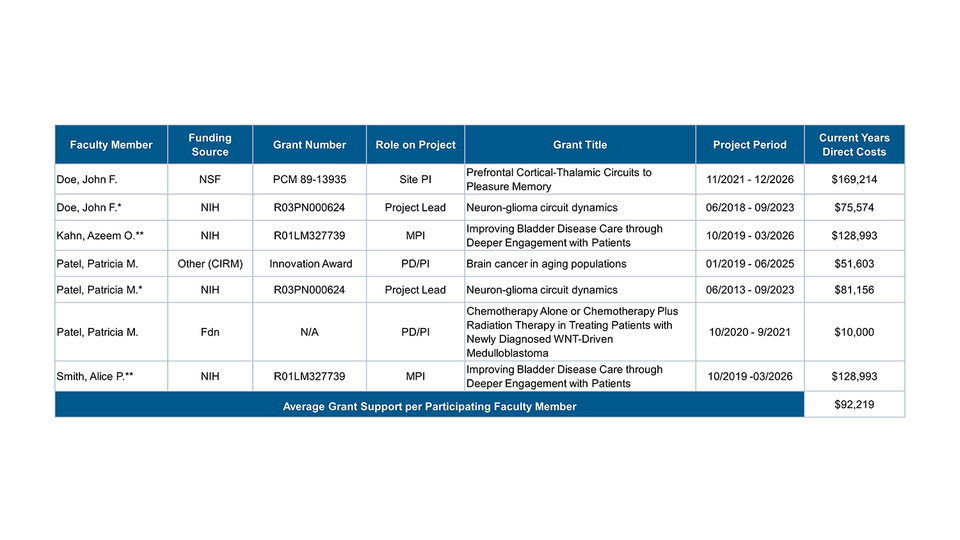Table 3. Federal Institutional Research Training Grant and Related Support Available to Participating Faculty Members
Overview
This table discloses other training grants in which mentors are currently involved. The goal of this table is to 1) reveal other training grants on campus or with partner institutions that share similar or potentially conflicting focus areas, and 2) minimize overlapping mentorship appointments, to ensure faculty are not over-extended and will be available for meaningful mentorship.
Overall Instructions
- Only include currently active federal institutional training, career development, and research education grants, i.e. all T-series grants, R25s, U2Cs, etc.
- Only list grants with overlapping mentors participating in both the proposed training grant and supporting the same type of trainee (pre-doc, post-doc, combined, etc.) on another existing training award.
- If a training grant is multi-site, list information for each institution separately.
- Page Limit: None. For more information visit our FAQs.
Summarize Table 3 data in the Research Training Program Plan's narrative Background subsection. Highlight any restrictions in support (whether specific groups of trainees are being targeted) and explain areas of substantial overlap.
Helpful Hints
Avoid Overlap
- The NIH funds scientifically distinct research. Thus, new proposals need to be significantly different than training awards on campus, even across difference NIH ICs (i.e. NCI, NIMGH, etc.). If your mentors are also mentors on other existing awards, review whether your grant’s focus area, submission cycle, and participating faculty are competing against similar programs already on campus.
- If other grants fit one or more of the following descriptions, consider reducing overlapping faculty, shifting your grant’s scientific focus area, and/or applying on a different cycle or to a different agency. Speak with your Program Officer for additional guidance.
- Training programs with similar titles, focus areas, or abstracts could indicate potential overlap in topic.
- Training programs submitted to the same NIH IC in the same submission cycle may be reviewed negatively due to increased scrutiny and potential topic and mentor overlap.
- Numerous overlapping faculty from other existing training programs on campus may indicate that topic is over-saturated or those mentors are over-extended.
- Note: If you are unsure of any potential overlap on campus, please contact GSUTraining@mednet.ucla.edu to discuss further.
- While the number of grants is important, it is also important to consider the type of research experience mentors are providing. Pay special attention to the number of overlapping grants that your mentors support. If there are more than 3 - 4 grants, it may indicate lack of mentor availability.
- Example: Column 8 shows that Dr. Aguilar has 6 overlapping grants so you decide to remove them from the grant. Your training grant is focused on Neuro-Urology, and both NINDS and NIDDK only allow T32 submissions on the May 25th deadline. Another neurology training grant on campus will be submitting for renewal this May, but there are no urology training grants competing during this cycle, so you decide to submit through NIDDK on the May cycle.
Guidance by Column
- Grant Title. Full grant title
- Award Number. Full award number
- Project Period. Entire project period in the format MM/YYYY-MM/YYYY
- PD/PI. Last Name, First Name and Middle Initial
- Number of Predoctoral Positions. Total number of full-time pre-doc positions*
- Number of Postdoctoral Positions. Total number of full-time post-doc positions*
- Number of Short-Term Positions. Total number of short-term training positions*
- Number of Participating Faculty (Number Overlapping). List two numbers:
- The total number of mentors and PIs on the grant
- The number of mentors and PIs on the proposed training grant in parenthesis (considered overlapping faculty, this number will correspond to the names in column 9)
- Names of Overlapping Faculty. Only list last names of overlapping mentors and PIs (from Table 2)
*Calculating Totals Correctly: Sum columns 5 – 7 and enter the totals in bold in the Total row.
Sample Table 3
Note: Follow NIH formatting guidelines – this is a visual demonstration and does not reflect NIH formatting or accurate information/data.
Table 3. Federal Institutional Research Training Grants and Related Support Available to Participating Faculty Members

Templates
- NIH Blank Template: Table 3 (Microsoft Word)
- Contact GSUTraining@mednet.ucla.edu for formatted Microsoft Excel templates
NIH Resources
-
Data Table Form Library (Please note as of January 2023 NIH is still utilizing FORMS G for Data Tables)
- Consolidated Sample Data Tables and Instructions (Microsoft Word)
- Blank Data Table Template (Microsoft Word)
- Data Table FAQs